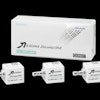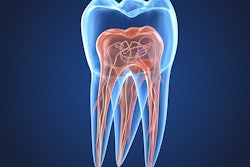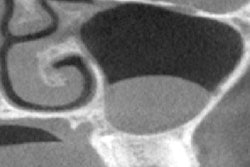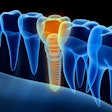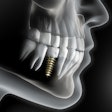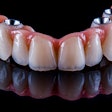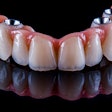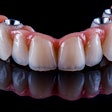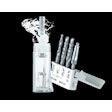Dental implants may improve aesthetics and aid in preserving jaw health, but they don’t feel and function exactly like natural teeth. Researchers from Tufts University may have found a way to make implants feel more like real teeth.
A smart implant, along with a gentler surgical technique, that was tested in rodents may offer the same sensory feedback that real teeth provide, which would allow for a more natural feel when chewing and speaking, according to a story published on June 11 in Tufts Now.
“Natural teeth connect to the jawbone through soft tissue rich in nerves, which help sense pressure and texture and guide how we chew and speak,” Jake Jinkun Chen, the director of Tufts’ division of oral biology at the school of dental medicine, said in the story. “Implants lack that sensory feedback.”
When patients receive traditional dental implants, a titanium post is fused into the jawbone to support a crown. Often, nerves are cut or damaged during the procedure.
To meet these challenges, researchers developed an implant that was wrapped in a biodegradable coating made with stem cells and a special protein. As the coating dissolves during healing, it releases the stem cells and protein, which triggers the growth of new nerve tissue around the implant.
Additionally, the coating contains tiny, rubber-like particles that allow it to mold into shape in the tooth socket. When the implant is inserted, it is compressed, but then the nanofibers gently expand until it fits snugly into the tooth space. This allows clinicians to complete a minimally invasive procedure that keeps existing nerve endings in the tissue around the implant, according to the story.
“This new implant and minimally invasive technique should help reconnect nerves, allowing the implant to ‘talk’ to the brain much like a real tooth,” Chen said.
In the study, six weeks after the surgical procedure, the implants remained firmly in place in rats. Also, there were no signs of inflammation or rejection.
“Imaging revealed a distinct space between the implant and the bone, suggesting that the implant had been integrated through soft tissue rather than the traditional fusion with the bone,” Chen said.
Although these results show promise, more research needs to be conducted. Future studies should be done in larger animal models and explore the safety and efficacy of the implants and approach before trials are completed in humans, according to the story.
Until then, the researchers will conduct a preclinical study to determine whether brain activity validates the new nerves surrounding the smart implant actually provide sensory feedback, according to the story.

